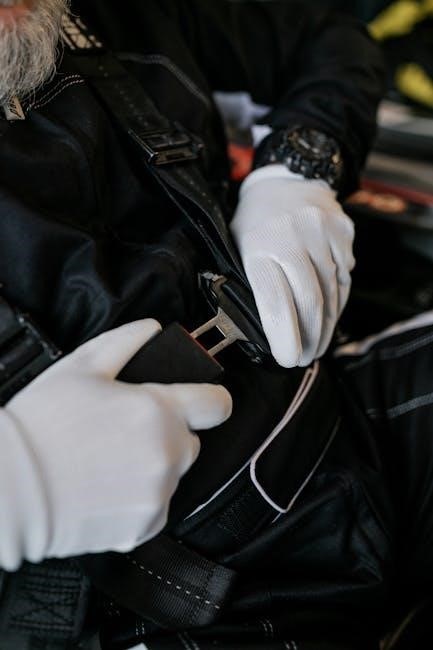Maxi-Cosi is a globally recognized brand committed to child safety and comfort during car journeys. Their car seats are designed with high-quality materials and rigorous safety standards. Each Maxi-Cosi car seat comes with detailed instructions to ensure correct installation and usage.

Understanding Your Maxi-Cosi Car Seat Model
Before you begin installing or using your Maxi-Cosi car seat, it’s crucial to understand the specific model you have. Maxi-Cosi offers a range of car seats designed for different age groups and needs, each with its own unique features and installation requirements. Identifying your model will ensure you follow the correct instructions and maximize your child’s safety.
Locating the Model Number: The model number is typically found on a sticker located on the car seat itself. Common locations include the base, the side of the seat, or underneath the seat pad. The sticker will also contain other important information such as the manufacturing date and weight/height limits.
Referencing the User Manual: Once you’ve identified your model, the next step is to locate the corresponding user manual. Maxi-Cosi provides comprehensive manuals with detailed instructions, diagrams, and safety guidelines specific to each model. These manuals are essential for proper installation, adjustment, and maintenance.
Online Resources: If you’ve misplaced your physical user manual, don’t worry! Maxi-Cosi offers digital versions of their manuals on their website. Simply enter your car seat model number into the search bar, and you’ll be able to download the manual in PDF format. Additionally, many online retailers and parenting websites also host Maxi-Cosi car seat manuals.
Key Features and Functions: Familiarize yourself with the key features and functions of your specific model. This includes understanding how to adjust the harness, headrest, and recline positions. Knowing these features will allow you to customize the car seat for your child’s comfort and safety as they grow.
Weight and Height Limits: Pay close attention to the weight and height limits specified for your car seat model. Exceeding these limits can compromise the safety of the seat in the event of a crash. Regularly check your child’s height and weight to ensure they are still within the recommended range.
Contacting Customer Support: If you have any questions or concerns about your Maxi-Cosi car seat model, don’t hesitate to contact their customer support team. They can provide expert guidance and assistance to ensure you are using the seat correctly and safely.
By taking the time to understand your specific Maxi-Cosi car seat model, you can ensure that you are providing the best possible protection for your child during car journeys.

Installation Instructions: ISOFIX vs. Belted
Maxi-Cosi car seats offer two primary installation methods: ISOFIX and belted. ISOFIX provides a secure and direct connection to your car’s chassis using integrated connectors. Belted installation utilizes the vehicle’s seat belts to secure the car seat, offering versatility across different car models.
ISOFIX Installation Steps
Installing your Maxi-Cosi car seat using ISOFIX is a straightforward process designed for a secure and stable fit. Begin by locating the ISOFIX anchor points in your vehicle. These are typically found at the base of the seat, where the seat back meets the seat cushion. Refer to your vehicle’s manual for the exact location if needed.
Next, extend the ISOFIX connectors on your Maxi-Cosi car seat. These connectors usually slide out or unfold from the base of the car seat. Align the connectors with the ISOFIX anchor points in your car and push them in until you hear a distinct “click” on both sides. This click indicates that the connectors are securely attached to the anchor points.
Once the connectors are engaged, check the indicators on the car seat. These indicators, often green in color, will confirm that the ISOFIX connectors are properly locked. If the indicators are red, it means the connection is not secure, and you should repeat the process, ensuring the connectors are fully engaged.
Many Maxi-Cosi ISOFIX car seats also feature a top tether strap. This strap attaches to an anchor point located on the back of the vehicle seat or in the cargo area. The top tether provides an additional point of stability, reducing forward movement in the event of a collision. Consult your vehicle’s manual to locate the top tether anchor point.
Extend the top tether strap and attach it to the anchor point. Tighten the strap until it is snug, but not overly tight. The goal is to eliminate any slack in the strap without putting excessive pressure on the anchor point. Check the car seat’s manual for specific instructions on tightening the top tether.
Finally, give the car seat a firm shake to ensure it is securely installed. It should not move more than one inch in any direction. If it does, recheck the ISOFIX connectors and the top tether strap, making sure everything is properly engaged and tightened. A secure installation is crucial for your child’s safety.
Always refer to your Maxi-Cosi car seat’s instruction manual for model-specific instructions and diagrams. The manual provides detailed guidance tailored to your specific car seat model, ensuring you follow the correct procedures for a safe and secure installation. Regular checks of the installation are recommended to maintain optimal safety.
Belted Installation Steps
If your vehicle doesn’t have ISOFIX anchor points, installing your Maxi-Cosi car seat using the vehicle’s seat belt is a reliable alternative. Before you begin, consult your Maxi-Cosi car seat’s manual for specific instructions related to your model. The manual will provide detailed diagrams and guidance tailored to your car seat, ensuring a safe and secure installation.
Position the car seat on the vehicle seat in the appropriate direction, as indicated in the manual. Rear-facing car seats are typically used for infants and young children, while forward-facing seats are suitable for older children who meet the weight and height requirements. Ensure the car seat is placed firmly against the vehicle seat back.
Locate the seat belt path on the car seat. This path is clearly marked and guides the seat belt through the correct route to secure the car seat. Thread the vehicle’s seat belt through the designated path, following the instructions in the car seat manual. Make sure the seat belt is not twisted or tangled.
Buckle the seat belt and ensure it is securely fastened. Pull the seat belt all the way out to engage the locking mechanism. Slowly retract the seat belt, removing any slack. The seat belt should now be tightly secured around the car seat, preventing it from moving freely.
Apply pressure to the car seat while tightening the seat belt. This helps to compress the vehicle seat cushion and ensure a snug fit. Use your body weight to push down on the car seat while simultaneously pulling the seat belt tight. This will minimize movement and create a more stable installation.
Many Maxi-Cosi car seats feature a locking clip, which is used to prevent the seat belt from loosening over time. If your car seat has a locking clip, attach it to the seat belt according to the instructions in the manual. The locking clip typically secures the seat belt near the buckle, preventing it from sliding and compromising the installation.
Once the seat belt is tightened and the locking clip is in place (if applicable), check the car seat for movement. It should not move more than one inch in any direction. If it does, recheck the seat belt path and ensure it is properly threaded. Tighten the seat belt further and re-secure the locking clip if necessary.
Regularly check the belted installation to ensure it remains secure. Over time, the seat belt may loosen due to normal use. Periodically retighten the seat belt and re-secure the locking clip to maintain a safe and stable installation. A properly installed car seat is crucial for protecting your child in the event of a collision.

Adjusting Harness and Headrest
Ensuring the harness and headrest of your Maxi-Cosi car seat are correctly adjusted is paramount for your child’s safety and comfort. The harness should fit snugly against your child’s body, without being too tight, and the headrest should provide adequate support for their head and neck. Proper adjustment minimizes the risk of injury in the event of a collision and ensures a comfortable ride for your little one.
Refer to your Maxi-Cosi car seat’s manual for specific instructions on adjusting the harness and headrest. The adjustment mechanisms may vary depending on the model, so it’s essential to consult the manual for accurate guidance. The manual will provide detailed diagrams and step-by-step instructions to help you achieve the correct fit.
To adjust the harness height, locate the harness adjustment mechanism on your car seat. This is typically a lever or button located on the back of the seat or near the headrest. Release the mechanism and slide the harness straps up or down to the appropriate position. The harness straps should be at or slightly below your child’s shoulders when rear-facing, and at or slightly above their shoulders when forward-facing.
Ensure the harness straps are not twisted or tangled. Twisted straps can create pressure points and discomfort for your child. Smooth out any twists before securing the harness. The harness straps should lie flat against your child’s chest and shoulders.
To tighten the harness, pull the harness adjuster strap located at the front of the car seat. Pull the strap until the harness is snug against your child’s body. You should be able to fit no more than one finger between the harness strap and your child’s shoulder. Over-tightening the harness can restrict your child’s movement and cause discomfort.
To loosen the harness, press the harness release button located on the harness buckle. Gently pull the harness straps outwards to loosen them. This will allow you to easily remove your child from the car seat.
The headrest should be adjusted so that it provides adequate support for your child’s head and neck. The top of the headrest should be at least level with the top of your child’s ears. Some Maxi-Cosi car seats have an adjustable headrest that can be raised or lowered to accommodate your child’s growth. Refer to your car seat’s manual for specific instructions on adjusting the headrest.
Regularly check the harness and headrest adjustments to ensure they remain correct as your child grows. Children grow quickly, so it’s important to readjust the harness and headrest as needed to maintain a safe and comfortable fit. A properly adjusted harness and headrest are crucial for protecting your child in the event of a collision.

Safety Checks and Maintenance
Regular safety checks and proper maintenance are essential to ensure your Maxi-Cosi car seat continues to provide optimal protection for your child. These checks help identify potential issues before they compromise the seat’s safety performance. Consistent maintenance ensures the car seat remains clean, functional, and in good working condition throughout its lifespan.
Before each use, visually inspect the car seat for any signs of damage or wear. Check the shell for cracks, the harness for fraying, and the buckles for proper function. Ensure all components are securely attached and that there are no missing parts. If you notice any damage, discontinue use immediately and contact Maxi-Cosi customer service or a certified car seat technician for assistance.
Periodically check the car seat’s installation to ensure it remains secure. Tug firmly on the car seat near the belt path or ISOFIX connectors to confirm it doesn’t move excessively. If the car seat is loose, retighten the belts or connectors according to the installation instructions. A properly installed car seat should not move more than one inch in any direction.
Clean the car seat regularly to remove dirt, spills, and crumbs. Use a damp cloth and mild soap to wipe down the shell, harness straps, and buckles. Avoid using harsh chemicals, bleach, or solvents, as these can damage the materials and compromise the seat’s safety. Allow the car seat to air dry completely before reinstalling it in your vehicle.
The fabric covers of some Maxi-Cosi car seats are machine washable. Refer to your car seat’s manual for specific instructions on removing and washing the covers. Use a gentle cycle and mild detergent. Do not put the covers in the dryer, as this can cause them to shrink or damage the fabric. Hang the covers to air dry.
Never lubricate the buckles or harness adjusters, as this can attract dirt and debris and impair their function. If the buckles become sticky or difficult to use, clean them with warm water and mild soap. Ensure they are completely dry before using them again.
Store the car seat in a clean, dry place when not in use. Avoid exposing it to extreme temperatures or direct sunlight, as this can damage the materials. If you are storing the car seat for an extended period, consider covering it with a cloth to protect it from dust and dirt.
Always follow the manufacturer’s recommendations for car seat replacement. Maxi-Cosi car seats have an expiration date, typically six to ten years from the date of manufacture. The expiration date is usually printed on a label on the car seat. Replace the car seat after the expiration date, or if it has been involved in a crash, even if there is no visible damage.
By performing regular safety checks and maintenance, you can ensure your Maxi-Cosi car seat continues to provide the best possible protection for your child. A well-maintained car seat is a safe car seat.
